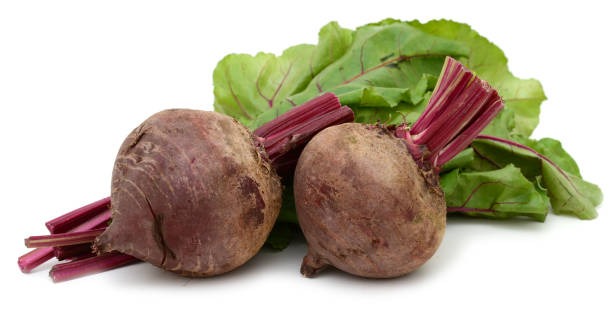When it comes to elevating everyday meals, certain spices hold a timeless place in kitchens worldwide. Among these, sumac and cloves stand out as distinct flavor enhancers. They have deep cultural roots and remarkable health benefits. Whether you're crafting a rich curry or adding a zesty finish to salads, these spices can transform your culinary experience.
Sumac is a crimson-red spice commonly used in Middle Eastern cuisines. Made from dried and ground berries of the sumac plant, it delivers a tangy flavor without acidity — a perfect alternative when you want brightness.
Tangy and slightly tart
Mild citrus notes
Earthy undertones
Sumac spice pairs wonderfully with grilled meats, dips, and dressings. In dishes like Fattoush salad, sumac is often dusted liberally to create its refreshing taste.
Sprinkled over roasted chicken, kebabs, or lamb
Mixed into yogurt sauces and marinades
Added to salad dressings and hummus
Key ingredient in the popular spice blend Za'atar
Cloves are the dried flower buds of the clove tree and a beloved ingredient in many global kitchens. With their warm, sweet, and slightly peppery flavor, these bring depth to both savory and sweet dishes.
Strong and aromatic
Slight sweetness
Hints of bitterness and heat
This spice plays an essential role in curries, biryani, and baked desserts. When cooked whole, these slowly release their oils, infusing dishes with a rich, comforting aroma.
Tempered in hot oil for curries and rice dishes
Ground and blended into spice mixes, such as garam masala.
Used in desserts like carrot cake and fruit pies
Added to chai tea and herbal infusions
Notable clove brands:
Spice Islands, Badia, Watkins
Store in airtight jars away from light and heat.
Buy freshly packaged spices for maximum potency.
Use whole cloves in slow-cooked dishes and powder them for baking.
Sprinkle sumac fresh as a finishing spice.
To elevate your dishes using sumac and cloves, technique matters just as much as the spices themselves. Because each spice behaves differently during cooking, understanding its ideal application is crucial for achieving depth, balance, and maximum flavor impact.
Use as a finishing spice for salads, soups, grilled meats, and roasted vegetables.
Mix into dry rubs and marinades for chicken, beef, or fish.
Blend with olive oil to create vibrant dipping sauces or drizzle over warm breads.
Add to rice or quinoa bowls for a tangy, refreshing lift.
Add whole cloves to rice, stews, and curries during the initial cooking stage.
Lightly toast them in oil or ghee to release aromatic compounds before adding other ingredients.
Grind and blend into dessert batters, tea blends, or warm winter beverages, such as mulled juices.
Pair with cinnamon, cardamom, and nutmeg for rich, layered spice in traditional recipes.
Bringing tradition into modern kitchens can unlock new levels of creativity.
Grilled halloumi or cottage cheese
Roasted chickpeas or hummus
Air-fried potato wedges
Grilled salmon or prawns
Roasted cauliflower or Mediterranean bowls
Rice dishes like pilaf or biryani
Lamb, beef, or poultry curries
Warm beverages like chai or hot cider
Baked apples and fruit compotes
Pumpkin or carrot-based recipes
While many see these spices as exotic or reserved for specific cuisines, they can easily become staples in everyday dishes. Introducing them into regular meal routines helps enhance flavor without relying on excessive salt, sugar, or artificial seasonings.
Sprinkle on scrambled eggs or omelets.
Add over avocado toas.t
Stir into Greek yogurt or sour cream dips.
Dust over roasted nuts or popcorn
Add to tomato-based soups for a subtle tan.g
Add to hot water with honey for a warming herbal drink.nk
Add a clove to boiled rice for added aroma.
Mix a small pinch into oatmeal or porridge.e
Infuse into vegetable or bone broth.hs
Small additions go a long way, making your meals unique and layered with depth.
Curries rely heavily on balance. Acid, heat, sweetness, spice, and fat all work in harmony. Sumac and cloves contribute key structural flavors to the profile.
Sumac can be used after simmering to brighten rich gravies or creamy sauces. Its acidity cuts through heavy components, enhancing flavors and preventing dishes from feeling dense. A light dusting before serving can uplift lentil curries, yogurt-based sauces, and spiced chickpea dishes.
These are foundational in building curry bases. They provide warmth, depth, and a strong spice backbone. Tempering them in oil before adding aromatics such as onion, garlic, and ginger helps release essential oils, allowing the curry to develop a bold, fragrant character.
Together, these spices ensure curry remains flavorful, balanced, and aromatic from the first bite to the last.
In many cultures, sumac and cloves are more than culinary ingredients; they carry traditional, symbolic, and even ceremonial significance.
Traditionally used as a souring agent and medicinal plant, sumac has been appreciated for centuries in Middle Eastern and Byzantine traditions. It was often relied on before widespread lemon cultivation and continues to symbolize brightness and purification in regional cuisines.
Cloves hold a significant place in the traditions of South Asia, East Africa, and the Middle East. They have been used in traditional medicine, rituals, and celebrations, symbolizing warmth, hospitality, and protection. In many cultures, cloves were historically prized more than gold due to their rarity and healing benefits.
Sumac and cloves, though deeply rooted in history, remain at the forefront of modern flavor innovation. Whether you're experimenting with global cuisines or refining your home dining experience, these spices offer versatility.
With a pinch of creativity, you can turn everyday dishes into beautifully fragrant, well-balanced flavor experiences.




Want to add a comment?